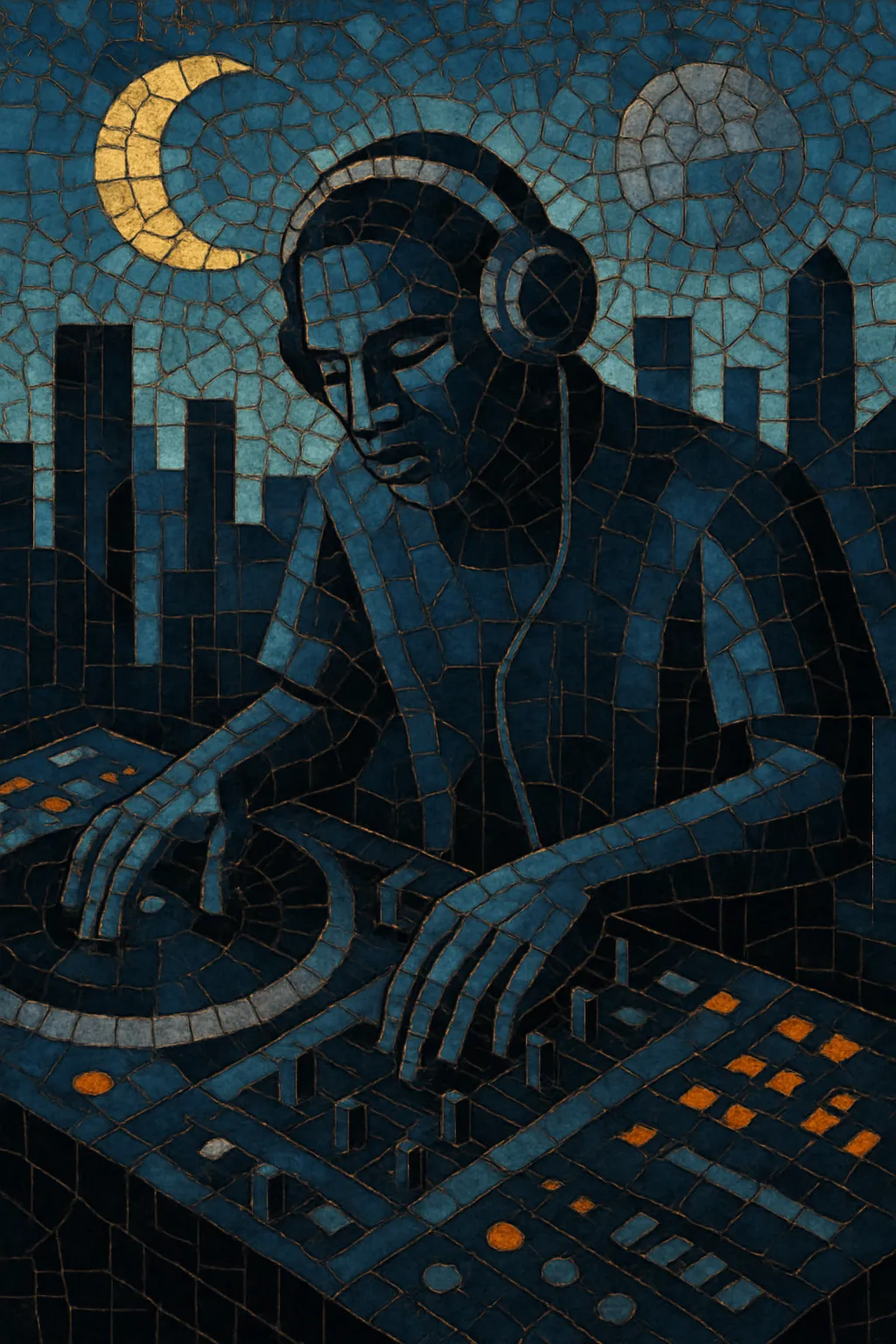
Detroit techno is a futurist, machine-soul form of electronic dance music that emerged from Detroit’s Black musical imagination in the mid-to-late 1980s. It fuses the clinical precision of European electronic music with the swing, grit, and emotional depth of American funk, disco, and Chicago house.
Characterized by 4/4 drum-machine grooves, syncopated hi-hats, propulsive basslines, and sleek, melancholic synth pads, Detroit techno aims for both kinetic dance-floor momentum and reflective, sci‑fi atmosphere. It is often minimalist in arrangement yet rich in timbre, foregrounding texture, space, and subtly evolving patterns over overt hooks or vocals.
Detroit techno coalesced around “The Belleville Three” — Juan Atkins, Derrick May, and Kevin Saunderson — who channeled the precision of Kraftwerk and European electronic music into the rhythmic sensibilities of American funk, disco, and Chicago house. Early records on labels like Metroplex (Juan Atkins), Transmat (Derrick May), and KMS (Kevin Saunderson) formalized the sound: crisp drum machines (TR-808/909), futuristic synths, and a distinctly Detroit blend of minimalism and soulful resonance.
A second wave, including Underground Resistance (Jeff Mills and “Mad” Mike Banks), Carl Craig, Robert Hood, and Eddie Fowlkes, pushed the music’s Afrofuturist vision, political edge, and technological rigor. Detroit’s sound found a kindred audience in Europe — especially Berlin (Tresor) and the UK — catalyzing a transatlantic exchange that fed into minimal techno, bleep techno, and broader rave culture.
Detroit techno privileged machines as expressive instruments: step-sequenced patterns, evolving filter sweeps, and atmospheric pads created a sense of motion through imagined futures. While vocals were rare, the music carried narrative through tension and release, timbral contrast, and motifs that hinted at sci‑fi and post-industrial landscapes.
Detroit techno seeded the foundations of modern techno worldwide, influencing minimal techno, dub techno, industrial techno, and strands of IDM and ambient techno. Its ethos — innovation through constraints, machine funk with human feel — remains a touchstone for producers seeking precision, depth, and emotional futurism.

